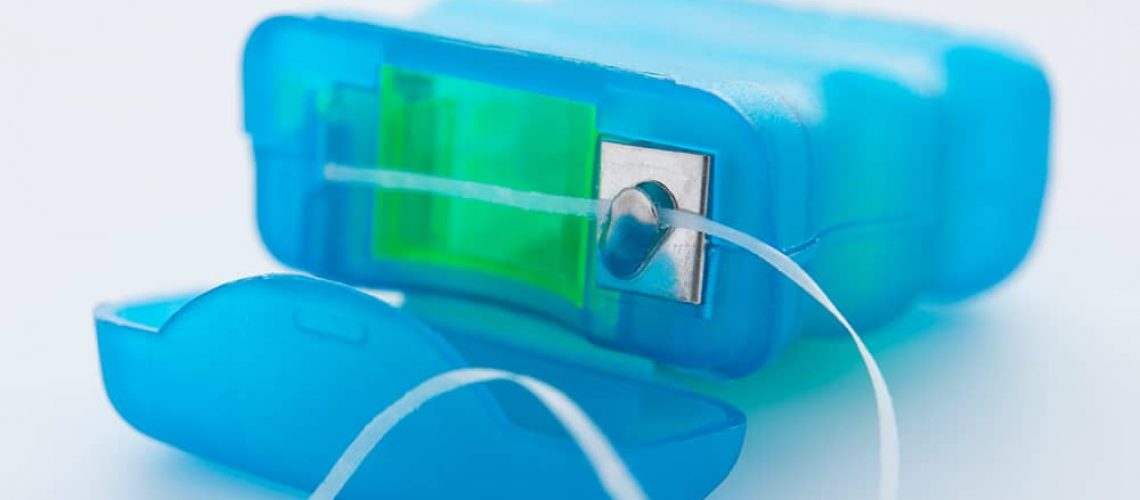Dental Floss – The How’s and Why’s
Many people brush their teeth on a regular basis thinking that doing so will ensure they have a healthy mouth and will prevent them from having rotting teeth and gums. Unfortunately, if you do not FLOSS daily then you have at least 40% chance of having a mouth that is infected and probably with jaw bone that is rotting away. Yes, gum infection rots your jaw bone away and causes your teeth to fall out! Yuk I hear you say!! The trillions of germs that accumulate each day on our teeth burrow down under the gum and eat or rot the jaw bone away. Apart from a little bleeding or bad breath without special dental instruments and X-rays one cannot tell if their jaw bone has rotted away. It is not until lots has rotted away that the tooth becomes loose, pain begins and the tooth starts to fall out. Whilst brushing is an essential part of maintaining health teeth and gums, without flossing you cannot have a healthy mouth. Here are a few tips on how to floss effectively and prevent the bacteria from rotting our jaw bone away.
We Give Free FLOSSING Lessons
Everyone thinks it is easy to floss. Just stick the floss between the teeth and saw away. However, it is more complicated than that and that is why at Lifetime Holistic Dental we teach all our patients how to brush and floss for FREE at all their 6 month active maintenance appointments.
Choosing your Floss
Don’t be mistaken in to thinking that any floss will do. There are a number of different types of floss on the market – the cheaper the floss is, the less effective it will be for your oral health. Some of the floss options available to you include waxed floss, unwaxed floss, tape floss, nylon floss or PTFE floss.
Floss that is waxed tends to slide between the teeth more easily, while tape floss is more effective if you have wider gaps between your teeth. PTFE floss, also known as monofilament floss, will slide between your teeth easier than nylon floss and is less likely to shred as well. However, some people are concerned about the chemicals in PTEE.
You can also choose between flavoured and non-flavoured floss, but that’s entirely up to your personal taste. Again some people are concerned about the flavouring agents being bad for the overall health. So simple plain Nylon floss or tape is best.
As flossing and brushing clean different parts of your tooth, you can brush and floss at different times, even in different places.
The following are a few tips to keep in mind for proper flossing form:
Holding the Floss
- You need a long piece – 50 cm or shoulder width is a good length.
- Grab the two ends and wrap the floss around your two second fingers multiple times until you have about 5 cms left between your fingers. Then place the floss under your finger nails of your first fingers. Now place your first fingers in your mouth either side of a teeth and slide the floss gently between your teeth. Next wrap it in a “C” shape around one tooth and slide it 2-3mm under the gum. This is a normal gap between the tooth and the gum and where the bacteria hide and cause gum infection. Rub up and down in this gap 3-4 times and then wrap the floss in a “C” shape around the other tooth in this gap. Then rub up and down again. Sounds complicated – well it is a bit actually and really all our patients need to be physically shown in their mouth how to floss. Then, at each 6 month active maintenance appointment we regularly give all our patients hints on how to Brush and Floss more effectively. It takes multiple times to learn to floss properly, not just once.
Using the Floss
It doesn’t matter which tooth you start with. Many people choose to begin with their front teeth, whether it’s at the bottom or top. Just make sure that you floss between every tooth – including those hard to reach molars.
When sliding the floss between your teeth, make sure that you don’t tear into your gums. You don’t need to be aggressive, just gently rub the floss between the gums and teeth without yanking it around.
Floss in a Y-motion down the tooth to the gum line to remove plaque. This process should be repeated for every tooth. Take the floss up in between your teeth and then wrap it around each tooth in a “C” shape so that you can get into the cuff of gum. This means that the floss goes under the gum!
If you notice any blood appearing from your gums, don’t be alarmed. Many people will stop flossing because their gums hurt when they do so – and the appearance of blood can be alarming. However, bleeding gums usually signifies that your teeth need to be flossed more often. The pain and bleeding should diminish the more regularly you floss. If it does not then give us a call at Lifetime Holistic Dental and we will help get your mouth healthy.
After Flossing
Once you’re done flossing, throw the used floss away and be sure to rinse your mouth with water in order to remove any loose food particles – not to mention it helps give your mouth a fresh feeling.
Flossing is a very important step in maintaining your oral health. You should floss at least once a day for two to three minutes at a time if possible – although flossing for even a minute a day will have a big impact, just be sure to use these tips on how to floss.
Making your next check up and clean visit more comfortable, maybe even pleasant?!
My patients that floss daily for at least for 2 weeks before their 6 month professional dental clean always tell me that the clean is painless. So if you find that your teeth are sensitive to cold foods and drinks and your last dental clean was painful then try flossing daily for the 2 weeks before the appointment and you will be pleasantly surprised. You really can make your next dental visit a pleasant experience.


